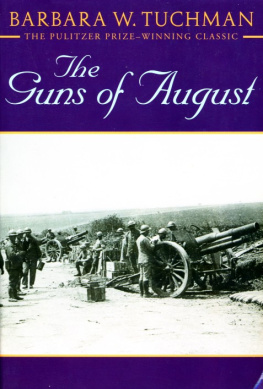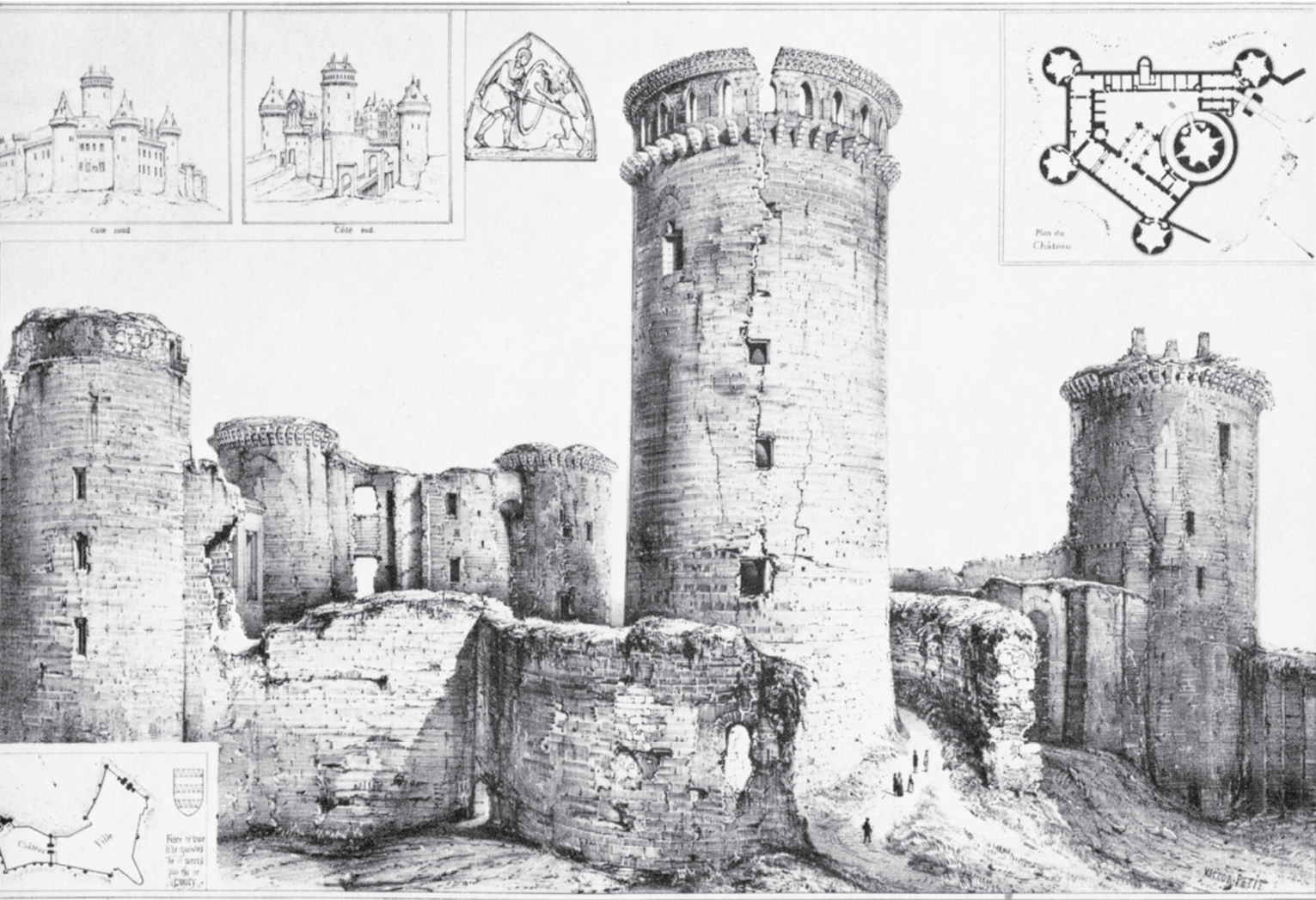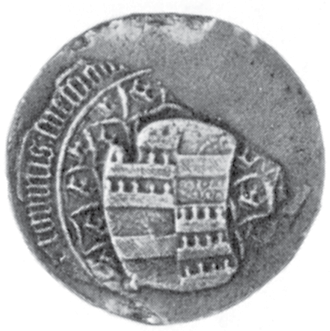A DISTANT MIRROR
Praise for A Distant Mirror
A beautiful, extraordinary book Tuchman at the top of her powers She has done nothing finer Wall Street Journal
Wise, witty, and wonderful a great book, in a great historical tradition Commentary
Beautifully written, careful and thorough in its scholarship What Ms Tuchman does superbly is to tell how it was No one has ever done this better New York Review of Books
Praise for Barbara Tuchman
Few historians, if any, write as well as Barbara Tuchman J. H. Plumb
A Tuchman book always teems with colourful characters observed with a relentless and unforgiving gaze and what an eye for detail and flair for language she possesses London Review of Books
Among contemporary historians Barbara Tuchman stands supreme The Times
Tuchman tells her story with cool wit and warm understanding Time
Tuchman has a gift of recreating a period and a mood by an inspired selection of detail and sheer narrative sweep Evening Standard
Dazzling Max Hastings on The Guns of August
Magnificent. A masterpiece of the historians art Guardian on The Guns of August
A superb chronicle a masterly examination Chicago Sun-Times on The March of Folly
The tale has most of the ingredients of an Eric Ambler spy thriller Saturday Review on The Zimmermann Telegram
A true, lucid thriller Mrs. Tuchman makes the most of it with a creative writers sense of drama and a scholars obeisance to the evidence The New York Times on The Zimmermann Telegram
CHAPTER 2: BORN TO WOE: THE CENTURY
Out of 614 grants of legitimacy in the year 134243, 484 were to members of the clergy.
CHAPTER 6: THE BATTLE OF POITIERS
It was this deal, negotiated through Englands envoy in Avignon, that was supposed to have earned him the title of Charles the Bad, although this is disputed by others who say it had been conferred by his Spanish subjects from the time he was eighteen. In fact the title was not contemporary and does not appear in the chronicles until the 16th century.
His title derived from the Latin capitalis, meaning chieftain.
CHAPTER 9: ENGUERRAND AND ISABELLA
If the unit was the Flemish ell of 27 inches, the coverlet would have measured 17 by 18 feet; if it was the English ell of 45 inches, the dimensions would have been 28 by 30 feet.
In one 14th century illuminated manuscript, Pride was a knight on a lion, Envy a monk on a dog, Sloth a peasant on a donkey, Avarice a merchant on a badger, Gluttony a youth on a wolf, Ire a woman on a boar, and Luxury (instead of the standard Lechery) a woman on a goat.
Judging by the diverse spelling of proper names on either side of the Channel, pronunciation of the common language must have been close to mutually unintelligible. Chaucers Prioresse spoke French
After the scole of Stratford atte Bowe,
For Frensh of Paris was to hir unknowe.
CHAPTER 11: THE GILDED SHROUD
His name was Giovanni or Gian Galeazzo, but the shorter form is used to distinguish him from his son, Gian Galeazzo the younger.
With a paste of powdered egg yolk, saffron, and flour sometimes mixed with real gold leaf.
CHAPTER 13: COUCYS WAR
The Historical Museum of Berne describes the banner as a 15th century reproduction of the original. Bernard Aucien suggests that it may have been captured in 1388 when the Swiss regained Nidau which had been ceded to Coucy at the close of the Aargau campaign.
According to Swiss sources, the cession was not made until ten years later when Leopold wanted Coucys support against the Swiss in the struggle that led to Sempach.
CHAPTER 14: ENGLANDS TURMOIL
The others were Lionel, dead in Italy, Joanna in the Black Death, and two daughters, Margaret, married to the Earl of Pembroke, and Mary, married to the Duke of Brittany.
It is not entirely clear whether the couriers were sent to her in France or by her from England to her husband in France.
Robersart settled in England with three sons and founded a line that terminated some 200 years later in Amy Robsart, the ill-fated wife of Queen Elizabeths favorite, Robert Dudley, Earl of Leicester.
CHAPTER 16: THE PAPAL SCHISM
The fourth, the aged Cardinal Tebaldeschi, had died.
CHAPTER 18: THE WORMS OF THE EARTH AGAINST THE LIONS
The hotel, called Rieulet or Nieulet in some contemporary manuscripts, was located in the now non-existent Rue St. Jean-en-Grve, which ran from the present Htel de Ville to the Rue de Rivoli. The residence was listed as sold to Raoul de Coucy, conseiller du Roi, in 1379, probably an error for Enguerrand, who in a charter of 1390 referred to it as ntre hostel Paris.
CHAPTER 19: THE LURE OF ITALY
The name Sicily remained attached to the Kingdom of Naples, causing confusion which should be resolutely ignored.
of Piacenza stated that a household of nine with two horses required a minimum income of 300 florins a year. In 1415 a wealthy Italian citizen spent 574 florins on his marriage celebration. A well-paid artisan at about this time earned approximately 18 florins a year.
CHAPTER 20: A SECOND NORMAN CONQUEST
By a fluke of survival, the domestic accounts of Coucy-le-Chteau for the year 138687 remained in existence long enough for a local antiquarian, Lucien Broche, to publish a report of them in 190509. The originals disappeared during the First World War, in which Picardy suffered great destruction.
CHAPTER 21: THE FICTION CRACKS
The originalMa souvent le poing fouci/De beaux florins a rouge escailleis obscure, but may refer to the fact that coins of good value, not worn or clipped, were often put in a bag tied at the top and sealed with colored wax, in this case a red seal.
CHAPTER 22: THE SIEGE OF BARBARY
Called Africa or Auffrique by the Europeans of the time, and sometimes confused by them with Carthage, the ancient Tunis.
Saracen was a term used indiscriminately for all Moslems, whether Berbers, Arabs, Moors, or Turks.
Illustrations
. Coucy-le-Chteau as it would have appeared in the 14th century. From a 16th century engraving.
. The abandoned castle in later years. From Du Sommerards Les Arts au Moyen Age, 183846.
. Fortunes wheel. From a mid-14th century manuscript of Roman de la Rose.
Erect figure, 1369
COUCYS SEALS










